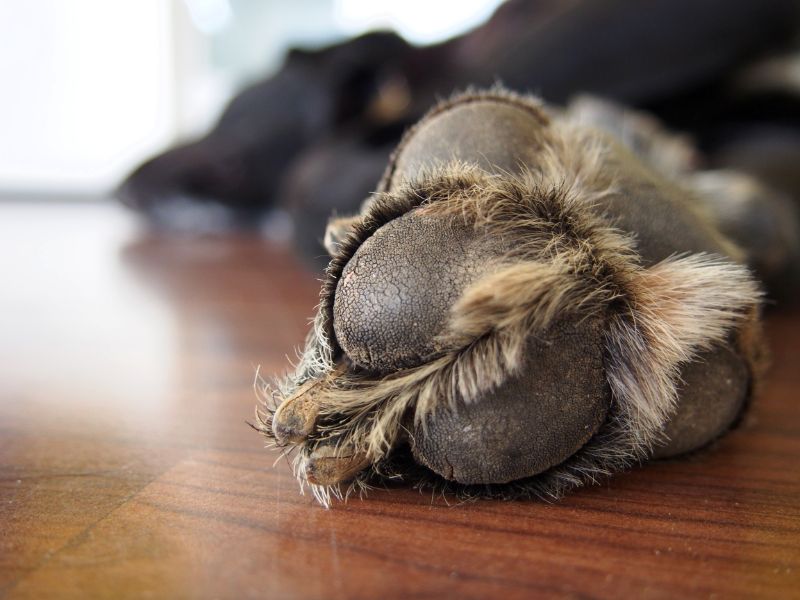
The pitter patter of tiny feet is often a much loved sound that reminds us of how much we cherish those we share our home with. Our pets’ paws are important, and as their caretakers it is important that we care for and pay attention to them.
Whether most animal lovers realize it or not, there are several paw diseases in pets that can affect our friend’s comfort and function. At Clairmont Animal Hospital we are happy to be able to help you to look out for your pet, paws and otherwise.
Detecting Trouble in Paw-idise
As a pet owner, it is not necessarily your job to diagnose what is going on when your pet has a problem. Leave that to our knowledgeable veterinary staff! Your pet does rely on you, however to recognize when something is amiss.
Paw diseases in pets can manifest in several different ways, so it is very important that you know what your pet’s paws normally look like. By paying attention during nail trims and cuddle sessions, you are much more likely to notice something is wrong before it becomes too serious.
Signs of paw diseases in pets may include:
- Limping or otherwise favoring one or more paws
- Broken or abnormal appearing nails
- Staining or loss of fur
- Licking or chewing the paws
- Cracked, raw, or bleeding paw pads
- Redness or swelling
- New lumps or bumps
If you notice something new or abnormal with your pet’s paws, we want to know right away. Make an appointment to see us so that we can get started determining what is going on and what we need to do to get your pet feeling better.
Paw Diseases in Pets
Many paw diseases in pets can appear similarly, but not all of them are treated or managed in the same way. Some of the more common pet paw problems that we diagnose include those caused by:
Allergic skin disease — Many pets experience allergies involving environmental allergens or foods. Feet are a commonly affected area of the body, and the resulting inflammation and irritation can lead to excessive licking or chewing, hair loss, redness, and pain.
Autoimmune problems — When the body attacks itself, chaos can ensue. Autoimmune problems that affect the skin such as pemphigus foliaceus can result in paw problems. Lupoid onychodystrophy is another autoimmune condition that specifically affects nail growth.
Infections — The overgrowth of environmental bacteria and yeast organisms can cause paw problems in pets. These most often occur after an imbalance is created secondary to allergies or other irritants. Other infections such as dermatophyte fungal infections or skin mites can cause paw trouble, too.
Trauma — Cuts and scrapes can happen, and the paws are particularly prone. Burns or abrasions can also occur when running or walking on inappropriate surfaces. Toes can also be fractured. Most commonly we treat broken or torn toenails which most commonly occur when overgrown nails become caught or snagged.
Systemic disease — Other medical conditions can manifest as paw problems in pets. Cancer and tumors can involve the paws. Liver disease can result in hepatocutaneous syndrome which affects the paw pads, and other endocrine problems such as Cushing’s syndrome can make the paws and other skin prone to infection.
Paw disease in pets can affect our furry friends significantly. By paying attention, though, you can make a difference as a pet owner and be sure those sweet feet get the attention and care that they need. Your pet’s paws are important, and they deserve to be treated as such.

